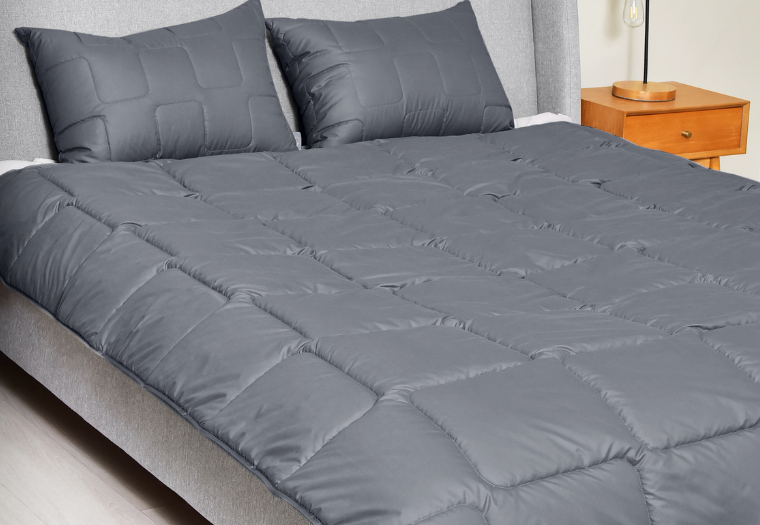 Microfiber is one of the most popular materials in today's textile industry. It is used to produce bedding, clothing, textile accessories, curtains, and also towels, cleaning cloths, and surface care products.
Microfiber is one of the most popular materials in today's textile industry. It is used to produce bedding, clothing, textile accessories, curtains, and also towels, cleaning cloths, and surface care products.
Microfiber is radically different from the "classic" synthetics of the past. That’s why it has become a symbol of comfort, practicality, affordability, and style—a material that successfully combines a wide range of qualities.
What Is Microfiber and Why Is It Better Than “Old” Synthetics
Microfiber (from Latin micro — “small” and fibra — “fiber”) is a fabric made from ultra-fine threads of polyester, polyamide, or a combination of both. The key distinction lies in the thickness of the fibers—microfiber filaments are dozens of times thinner than a human hair or natural silk.
Unlike synthetic fabrics of the 1970s–1990s (such as polyester or nylon), microfiber does not feel plastic-like to the touch, doesn’t accumulate static electricity, doesn’t cause overheating, and is gentle on the skin. It is a soft, lightweight, and breathable material that revolutionized the world of textiles.
How Microfiber Is Made: A Breakthrough in Textile Technology
 Microfiber production is a technically advanced and highly precise process that includes several key stages:
Microfiber production is a technically advanced and highly precise process that includes several key stages:
- raw material preparation;
- fiber formation;
- structural modification;
- fabric weaving and finishing.
Each stage plays a crucial role in determining the properties of the final fabric.
Raw Material Preparation
Microfiber is made from polyester, polyamide, or a blend of the two. The raw material is melted and extruded through microscopic nozzles to form extremely fine threads.
Fiber Formation
As a result of the preparation process, ultra-thin fibers are produced—with a diameter of less than 1 denier.
For comparison:
- silk fibers measure about 1 denier;
- human hair measures around 20 denier.
In some types of microfiber, fibers are split into smaller segments using water, heat, or mechanical processing to create special shapes and micro-channels.
Structural Modification
Microfiber is often produced as a bicomponent fiber—using two polymers that are later separated into finer strands. This technique creates a fabric with excellent absorbency, breathability, and thermal regulation properties.
Fabric Creation and Finishing
The fine fibers are woven into fabric at the desired density. The fabric then undergoes:
- heat treatment;
- dyeing;
- application of decorative prints or functional coatings (such as antibacterial or water-repellent finishes).
Why Microfiber Is So Popular in Today’s Textile Industry
.png) Modern microfiber offers a unique combination of features that make it a versatile and widely used fabric:
Modern microfiber offers a unique combination of features that make it a versatile and widely used fabric:
- Breathability and thermal regulation – the fabric “breathes,” prevents overheating, and eliminates the greenhouse effect.
- Hypoallergenic properties – does not trap dust, does not irritate the skin, and is safe even for sensitive individuals.
- Softness and lightness – feels pleasant to the touch and creates a sense of comfort and coziness.
- Durability and long life – withstands repeated washing without losing shape or color.
- Easy care – dries quickly, doesn’t require ironing, and is easy to clean.
Microfiber is a striking example of how high technology has transformed synthetic textiles. From a material once avoided for its discomfort, it has evolved into one of the most functional, attractive, and pleasant-to-use fabrics of our time.
Thanks to its innovative composition and modern production methods, microfiber has earned a permanent place in both household and professional textiles.
Synthetic fabrics were also discussed HERE.
